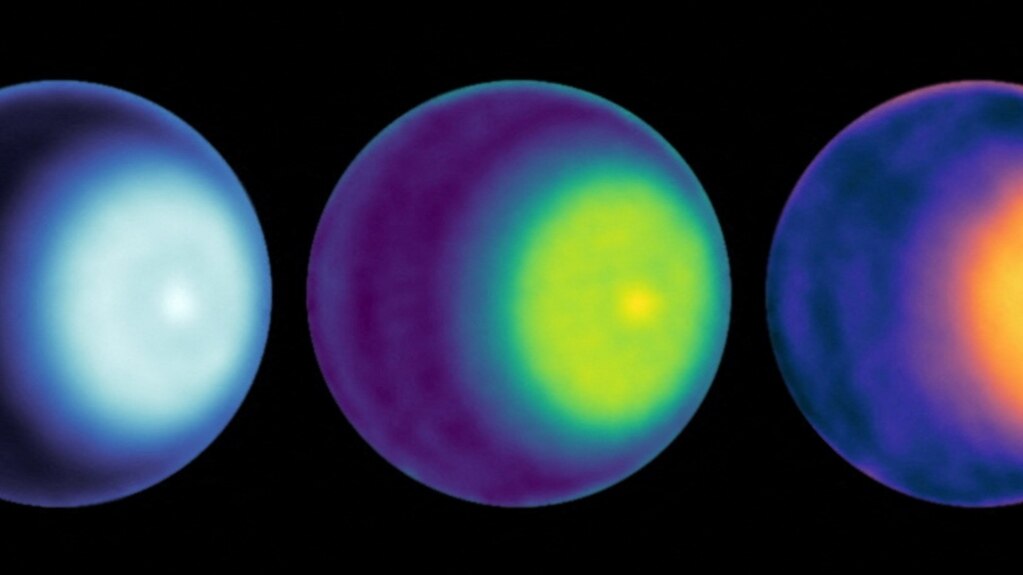The seventh planet from the sun, Uranus, is a world surrounded by mystery. Seen up close just once nearly forty years ago by a passing NASA spacecraft, the planet still guards many secrets.
But new observations are providing a fuller understanding of its atmosphere. These observations, made from a telescope located in New Mexico, include the detection of a polar cyclone whose center measures a quarter of Earth's diameter.
Uranus is a kind of planet known as an ice giant, like its planetary neighbor Neptune. Scientists were able to look more deeply into the atmosphere of Uranus than ever before. And the findings painted a picture of a planet that is more unusual than previously known.
Alex Akins of NASA's Jet Propulsion Laboratory in California was the lead writer of the research published in Geophysical Research Letters. While Neptune and Uranus are similar, Akins said Uranus “has some pretty unique features."
"It spins on its side. And even then, its magnetic field is still misaligned with its rotational axis. The atmospheric circulation and internal heat release appear weaker than Neptune, but there are still a range of ... features and storms that have been observed," Akins added.
Uranus is the third-largest planet in our solar system. It has a diameter of about 50,700 km and is big enough to fit 63 Earths inside it. Uranus orbits the sun at a distance of about 2.9 billion km, almost 20 times further than Earth does. One orbit lasts 84 years.
Its unusual tilt makes Uranus appear to orbit the sun like a rolling ball.
The researchers used the Very Large Array telescope in New Mexico to see below the clouds at the top of the atmosphere. They found moving air at the north pole that was warmer and drier, evidence of a strong cyclone. Researchers were able to estimate the size of the storm's center but not the entire cyclone's diameter. It is possible that the cyclone was wider than Earth.
The research suggested that polar cyclones exist on many bodies in our solar system - all the planets except Mercury and Saturn's moon Titan.
Most of the mass of Uranus is a fluid of icy materials - water, methane and ammonia. Uranus is surrounded by two sets of rings and orbited by 27 small moons. Its atmosphere is the coldest of any of the eight planets, including outermost Neptune.
Uranus’ only close meeting with a spacecraft came when Voyager 2 flew by in 1986.
"There are a lot of unknowns," Akins said about Uranus. "How did it get tilted on its side? Is its interior really 'icier' than the gas giants (Jupiter and Saturn)? … Why is the pole so much drier than the equator? Are its satellites (moons) ocean worlds?"
I’m John Russell.

